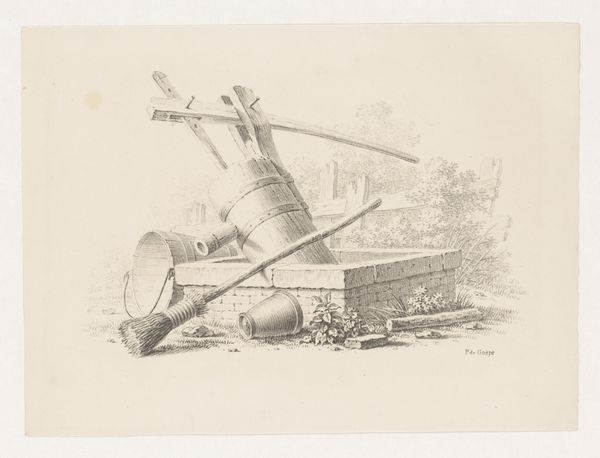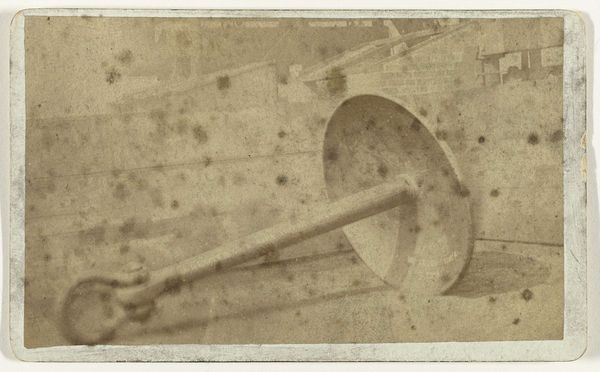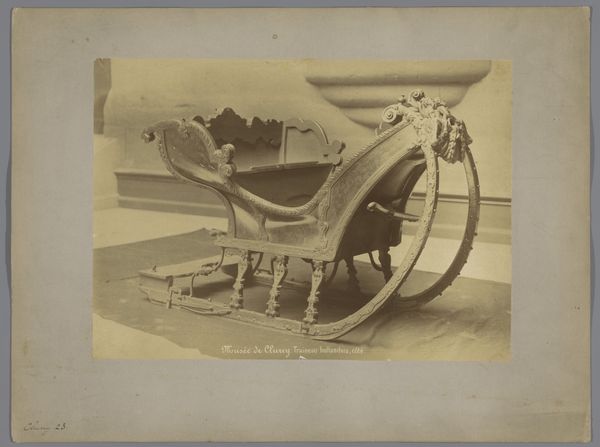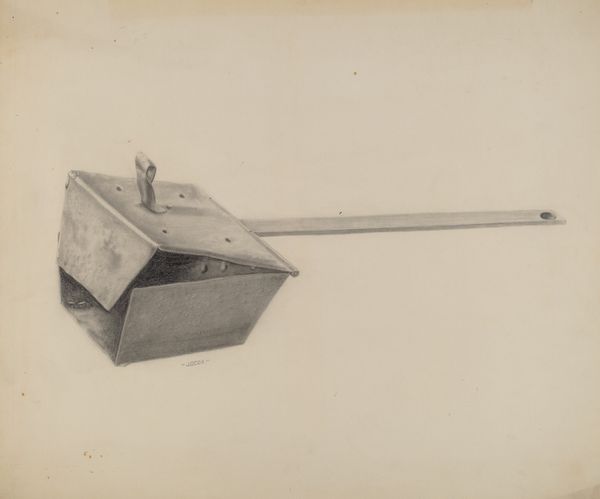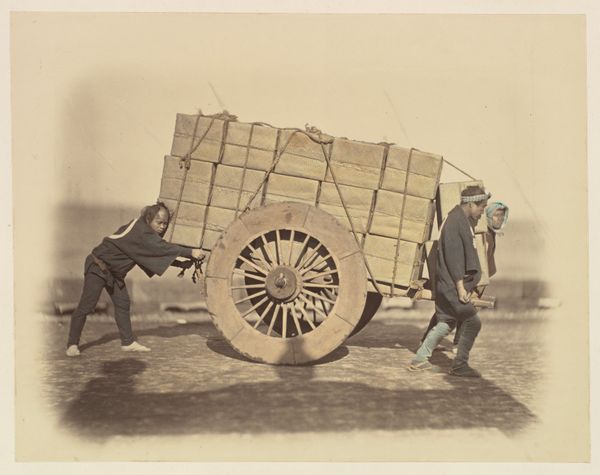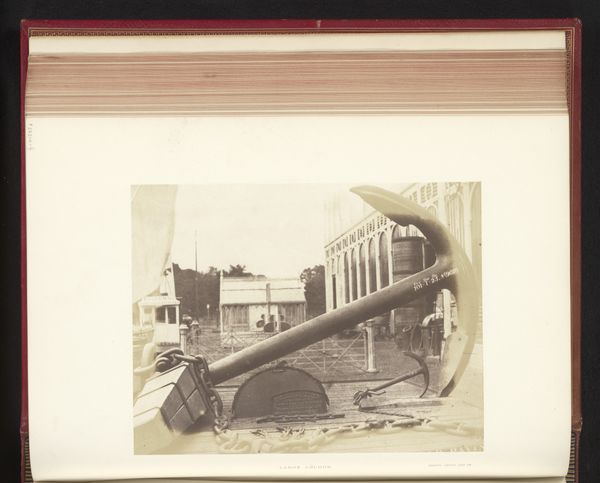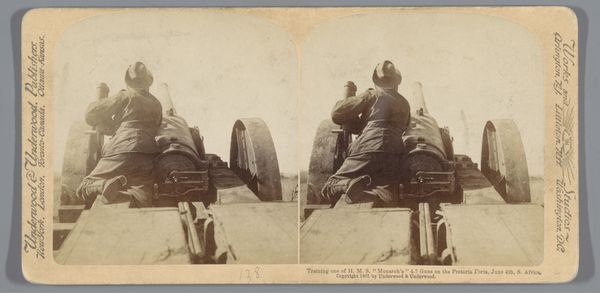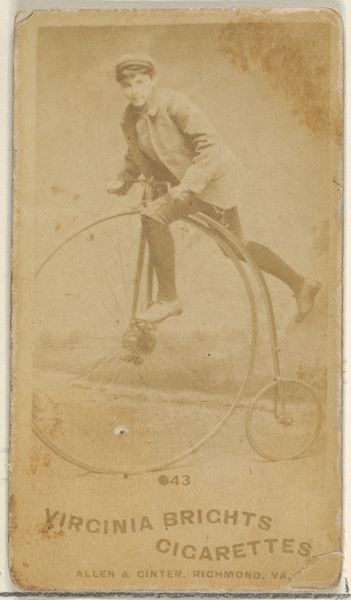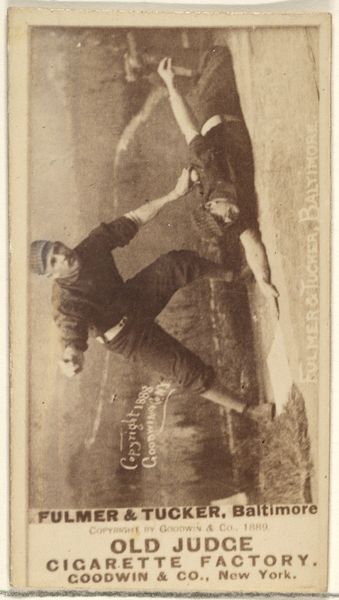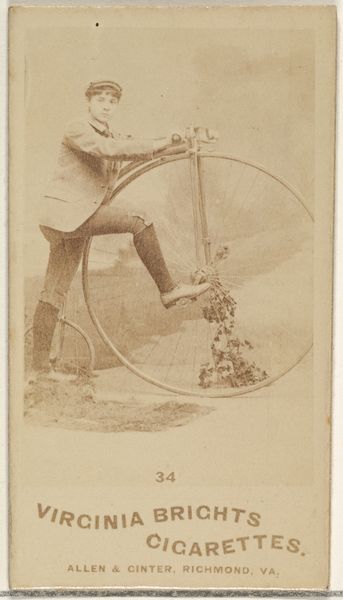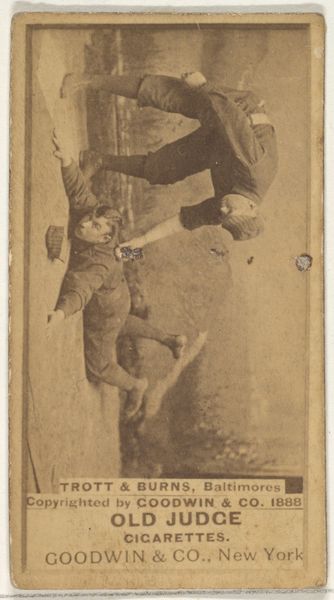
photography, gelatin-silver-print
#
photography
#
gelatin-silver-print
#
realism
Dimensions: height 10.7 cm, width 16.4 cm
Copyright: Rijks Museum: Open Domain
Curator: Standing before us is Joseph Norris's "Anchor," a gelatin-silver print likely made between 1870 and 1885. Editor: The sepia tones immediately evoke a sense of bygone industry, the weight of labor somehow embedded in the texture. There's something deeply melancholic about it. Curator: Indeed, the anchor itself has powerful symbolic weight, representing hope, stability, and safe harbor, particularly poignant perhaps in a port city bustling with maritime traffic. Editor: And yet, presented outside the context of the sea, stripped of its intended use, it becomes just another object—a study of material, mass, and the skill required to forge something of this size. Look at how it's laid almost unceremoniously against a nondescript wooden wall, we lose that narrative thread to begin to see only its composition, only the shape itself. Curator: I'm drawn to the very physicality of the gelatin-silver print, a photographic process allowing for sharper details and a broader tonal range. It is almost as if Norris is emphasizing the transition from reliance on hand craftsmanship to machine-made uniformity during this period. How do the material properties echo the tension between labor and machine that was prominent during industrial advancement? Editor: That tonal range lends depth to the photograph and a deceptive sense of reality. The sharp blacks emphasize that industrial age reality. There's this dance happening where you could imagine the workers that would work the material but what also lies in the photograph, is an awareness of its own material self: it reminds us that this is made, touched and formed for the sake of labor. Curator: Absolutely. The anchor also mirrors human struggles against overwhelming forces, offering solace. Its weight reminds us of burdens and responsibilities, whether personal or societal. I can also sense continuity in the weight the image carries: how does its form influence ideas and belief, past to present? Editor: Looking at it from this perspective, I think seeing the details helps me acknowledge that its social construction is built upon craft, culture, materiality and labor; there's this undeniable story the anchor itself represents through process and physical build that is both intimate and monumental. Curator: A captivating glimpse into material, symbol and memory. Editor: A poignant, quiet study of the anchor as a marker of both human ingenuity and relentless work.
Comments
No comments
Be the first to comment and join the conversation on the ultimate creative platform.
